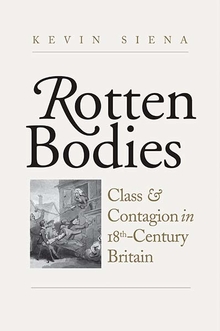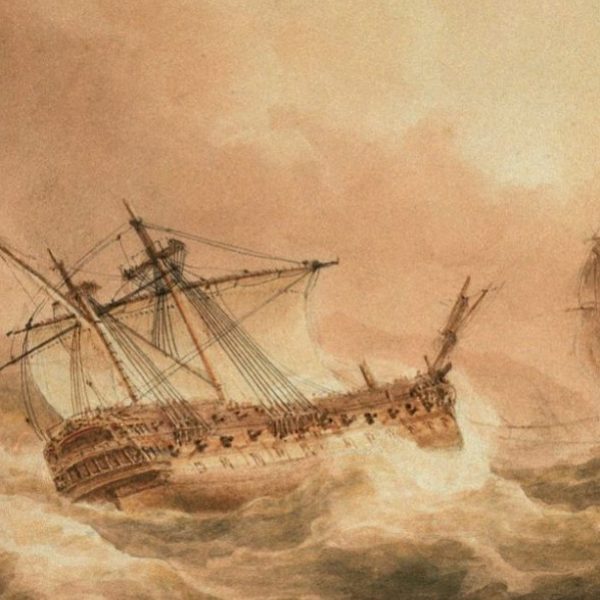Remembering (and Forgetting) Epidemics
Kevin Siena—
Every year my undergraduates are surprised to learn that 50-100 million people died a century ago during the Spanish Flu pandemic of 1918–20. We can probably thank the stunning success of twentieth-century biomedicine for this particular episode of historical amnesia. Generations of North Americans raised in relative security from the worst horrors of infectious diseases, it would seem, have felt little need to register the epidemic as a keystone historical event. Indeed, the kernel of one of the more cogent critiques of anti-vaccinationists is historical rather than scientific: namely, that with a fuller appreciation of medical history they might not take scourges like measles or polio quite so lightly. It has not always been so. Not unlike wars, revolutions or natural disasters, epidemics wreak misery, panic and social disruption and have thus often left legacies of trauma that linger in the cultural memory long after they have passed.
Consider plague. Early modern Londoners were certainly no strangers to the disease. It returned to the metropolis episodically throughout the sixteenth and early seventeenth centuries. It claimed a quarter of the city’s population in 1563, a fifth in 1625. Then, like the grand finale of a fireworks display, it exploded in 1665 to take 100,000 London souls before falling silent. For all intents and purposes, the English were safe from plague after its final reported case in 1679.
But eighteenth-century Britons would have scoffed at the idea that they were secure. Even a century after the great epidemic, Londoners several generations removed from its ravages kept plague’s lessons at the forefronts of their minds. One of the most consequential of those lessons was that epidemics tended to start among the poor.
Doctors told them as much. Londoners had anxiously followed epidemics in the Bills of Mortality, the weekly reports that tabulated London-deaths by both cause and place. Citizens knew very well where epidemics started and raged most fiercely. It was therefore hardly a secret that plague hit the poorest neighborhoods hardest. Here, it is useful to bear in mind the pressures doctors faced when confronting plague. After all, their treatments were virtually impotent. But if they couldn’t defeat the disease, they might at least explain it. So, it was that physicians developed theories to explain what the Bills seemed to showcase: that paupers were uniquely susceptible to contagion. Lives lived in filth and diets of low grade food, suggested doctors, rendered paupers’ bodies akin to other forms of refuse and corrupt waste that authorities furiously cleansed in the hopes of protecting the city. This helps explain why plague orders routinely banished beggars as part of the City’s hygiene program.
A century later these lessons remained current. Eighteenth-century Britons stayed abreast of reports on plague abroad, especially when it struck Marseilles in the 1720s. However, in the absence of actual plague at home, Londoners remained vigilant of other diseases that seemed to flourish in slums, workhouses and other sites of poverty. It is telling, for example that the disease eventually called typhus was frequently termed “Pestilential Fever.” Indeed, doctors depicted the disease as just a weak form of plague itself, one that might easily morph into the real thing. As late as 1801 Quaker physician John Coakley Lettsom still theorized that “plague is merely an aggravated malignant fever.” For much of the eighteenth century the most worrying form of pestilential fever was so-called Jail Fever. In the summer of 1750 utter panic struck London when lawyers, magistrates and the Lord Mayor died of pestilential fever caught, the public was told, from the foul bodies of prisoners who stood before them while they administered trials in the Old Bailey courtroom. Almost instantaneously, the cultural memory of epidemics kicked into action. Newspapers reporting on the outbreak reprinted passages taken from plague treatises. Notably, they reached back almost two centuries to recall a specific epidemic. Three separate papers published the following passage between May 24th and May 26th:
The Black Assizes at Oxford, held in the Castle there, in the Year 1577, will never be forgot; in which the Judges, Gentry, and almost all that were present to the number of 300, were kill’d by a poisonous Steam, thought by some to have broken forth from the Earth; but by a noble and great Philosopher, Lord Bacon, more justly supposed to have been brought by the Prisoners out of the Gaol into Court.
Readers inspired to learn what the great Francis Bacon had said of Jail Fever would have been troubled to find the legendary scientist call it “the most pernicious infection next to the plague.”
Memories of plague haunted Londoners throughout the rest of the century. When a second Old Bailey epidemic again killed judges in 1772 terrified Londoners argued that prison reform “claims the Attention of Government equally with the Means of preventing the Plague being brought into this Country; for many learned Men think the Jail Fever a Species of the Plague.” The St. James Chrolicle declared “it is a national concern and ought therefore to no longer be delayed; or . . . we I fear shall be visited with a secondary plague.” Reform efforts ensued, but a decade later Parkers General Advertiser could still warn “The King’s Bench and Fleet Prison are at this time so full that a gaol fever is dreaded every hour—perhaps a plague may be the consequence.” John Howard is best known as the humanitarian who toured English prisons and spearheaded their reform. But fewer remember that he turned directly from prisons to lazarettos, touring continental plague ports in 1785 in search for strategies to keep his countrymen safe. There he found doctors assuring him that plague “disguises itself under the form of other diseases” and that “the air about poor patients is more infectious than about the rich.” When questioned how he could enter so many toxic spaces and not sicken, Howard explained that he sniffed vinegar, one of the oldest plague-prophylactics on record. A rage quickly followed, as apothecaries did brisk business selling “Four Thieves Vinegar” to anxious Londoners who wished to protect themselves in London crowded streets.
Not one of them had ever seen plague on British soil. Nor had any of their parents, or even their grandparents. As far as England was concerned, plague was long gone. But the late Georgian penchant for sniffing vinegar would suggest that it was not at all forgotten. We must therefore consider it a fairly recent development that this cleavage has emerged dividing us from our own epidemic pasts. Our grandparents’ diseases, we seem to think, are no longer much of a concern. Over the longue duree, this stance is an aberration.
Kevin Siena is associate professor of history at Trent University. He is the author of Venereal Disease, Hospitals and the Urban Poor: London’s “Foul Wards,” 1600–1800, which was shortlisted for the Jason A. Hannah Medal.
Further Reading:

Featured Photo by Greg Ortega on Unsplash


























